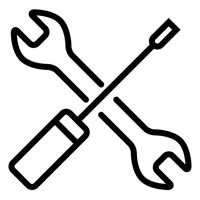The Complete Guide to Low Resistance Testing in Industrial Applications: A Deep Dive into the AEMC 6240, 6255, and 6292 Micro-Ohmmeters
Author: James Osborne Date Posted:12 May 2025
The Complete Guide to Low Resistance Testing in Industrial Applications: A Deep Dive into the AEMC 6240, 6255, and 6292 Micro-Ohmmeters
Table of Contents
- Introduction to Low Resistance Testing
- What is a Micro-Ohmmeter (Ducter Tester)?
- Why Low Resistance Testing Matters in Industry
- Key Applications
- Switchgear and Switchboard Testing
- Welded Joint Testing
- Busbar and Cable Joint Testing
- Ground Bond Testing
- Transformer and Motor Winding Testing
- Understanding Low Resistance Measurement Principles
- Introducing the AEMC Range
- AEMC 6240 Overview
- AEMC 6255 Overview
- AEMC 6292 Overview
- Comparison Table: AEMC 6240 vs 6255 vs 6292
- Best Practices for Low Resistance Testing
- Safety Considerations and Compliance
- Conclusion: Choosing the Right Low Resistance Tester
1. Introduction to Low Resistance Testing
In the world of industrial electrical systems, low resistance can be the unsung hero—or the silent threat. From switchgear reliability to welded joint integrity, the presence of excessive resistance in critical components can result in overheating, voltage drops, and even catastrophic equipment failure.
Low resistance testers, commonly known as micro-ohmmeters or ducter testers, are essential tools for detecting these potential issues before they cause real-world problems. These instruments are designed to measure extremely small resistances, often in the micro-ohm range, and are indispensable in switchboard manufacturing, energy distribution networks, heavy machinery maintenance, and industrial installations.
2. What is a Micro-Ohmmeter (Ducter Tester)?
A micro-ohmmeter is a precision instrument designed to measure low levels of electrical resistance—typically below 1 ohm and often into the micro-ohm range. These readings are critical for ensuring proper electrical continuity in high-current paths.
The term “Ducter” is a historical brand name that has become synonymous with low resistance testers, much like “Kleenex” for tissues. Whether called a ducter, micro-ohmmeter, or low resistance ohmmeter, these testers play a pivotal role in verifying the integrity of connections in power systems.
3. Why Low Resistance Testing Matters in Industry
a. Preventing Equipment Failure
A high-resistance connection generates heat, which can lead to:
- Equipment overheating
- Arc faults
- Component degradation
- Fire hazards
b. Ensuring Operational Efficiency
Power losses across poor connections increase energy consumption and reduce system efficiency—especially in high current circuits like switchboards or industrial transformers.
c. Regulatory Compliance
Low resistance testing is often a requirement for quality assurance, commissioning procedures, and compliance with standards like IEEE, IEC, and NETA.
4. Key Applications for Low Resistance Testers
a. Switchgear and Switchboard Testing
Switchgear contains circuit breakers, fuses, busbars, and connection terminals that must all maintain minimal resistance. Poor connections here can lead to severe operational hazards.
Micro-ohmmeters are used to:
- Measure busbar joints
- Test circuit breaker contacts
- Verify maintenance repairs
- Conduct acceptance testing during installation
b. Welded Joint Testing
In industries such as rail, mining, and shipbuilding, welded electrical joints must be tested for continuity and uniform conductivity. Variations in resistance can signal cold welds, corrosion, or structural failure.
c. Busbar and Cable Joint Testing
High-current busbars and crimped or bolted cable lugs are notorious for developing high resistance due to:
- Oxidation
- Loose fastenings
- Poor installation
Routine testing ensures minimal power loss and operational longevity.
d. Ground Bond Testing
Micro-ohmmeters confirm that safety grounds and bonds have proper continuity and can carry fault currents without developing hazardous voltages.
e. Transformer and Motor Winding Testing
Internal winding resistance testing helps detect shorted turns, deteriorating insulation, and improper winding repairs.
5. Understanding Low Resistance Measurement Principles
Low resistance testers use the four-terminal Kelvin method to eliminate the effect of lead and contact resistance. This method involves:
- Two terminals to inject current
- Two separate terminals to measure voltage
The voltage drop across the component under test is then used with Ohm’s Law (R = V/I) to determine resistance.
Typical features include:
- DC test current (up to 200A in advanced models)
- Auto-ranging
- Digital filtering to reject noise
- Temperature compensation
- Data storage and PC connectivity
6. Introducing the AEMC Range: Precision for Every Application
AEMC 6240 – Entry-Level High Accuracy
The AEMC 6240 is a compact, lightweight micro-ohmmeter designed for quick field measurements and bench testing. It features:
- Test currents up to 10A
- Resolution down to 1µΩ
- Easy-to-read LCD
- Rechargeable battery
- Data hold and auto power off
Ideal for: Low-intensity field testing, switchboard commissioning, and general industrial maintenance.
AEMC 6255 – Versatile and Rugged
The AEMC 6255 steps up in both power and functionality:
- Test currents up to 10A
- Four measurement modes: automatic, continuous, inductive, and resistive
- Storage for up to 1500 test results
- USB data transfer
- Temperature compensation
Ideal for: Field technicians working in high-voltage substations, power utilities, and industrial sites requiring frequent testing with data logging.
AEMC 6292 – Heavy-Duty, High Current Testing
The AEMC 6292 is the flagship model built for high-capacity testing:
- Test currents up to 200A
- Measurement resolution to 0.1µΩ
- Remote control via USB
- Rugged industrial housing
- Mains powered
Ideal for: High-current applications such as busbar joints, welded connections, switchgear commissioning, and transformer manufacturers.
7. AEMC Micro-Ohmmeter Comparison Table
|
Feature |
AEMC 6240 |
AEMC 6255 |
AEMC 6292 |
|
Max Test Current |
10A |
10A |
200A |
|
Min Resolution |
1µΩ |
0.1µΩ |
0.1µΩ |
|
Data Storage |
99 measurements. |
1500 measurements. |
8000 measurements |
|
Communication |
USB |
USB |
USB |
|
Display |
LCD |
LCD |
LCD multi line |
|
Use Case |
Field/basic lab |
Field + trending |
Industrial, heavy use |
|
Typical Applications. |
Cable lugs |
Switchboards |
Busbars, welds, XFMR. |
8. Best Practices for Low Resistance Testing
a. Clean Connections
Ensure all test points are free of oxidation, paint, and oil for consistent results.
b. Use Proper Test Leads
Four-wire Kelvin leads should be used to eliminate lead resistance errors.
c. Stabilize Temperature
Resistance readings are temperature-sensitive. Where possible, allow devices to stabilize before testing.
d. Repeat Measurements
Average multiple tests to identify outliers and improve confidence in the results.
e. Log and Compare Results
Use onboard memory and software to compare historical data, especially for preventative maintenance programs.
9. Safety Considerations and Compliance
When using micro-ohmmeters:
- Always verify equipment is de-energized before testing.
- Use PPE appropriate to the environment.
- Adhere to IEC 61010 and other relevant safety standards.
- Lockout/Tagout (LOTO) procedures must be enforced in high-voltage environments.
- Ensure test currents do not exceed the rating of the equipment under test.
10. Conclusion: Choosing the Right Low Resistance Tester
For any industrial environment where reliable electrical continuity is critical, low resistance testing is non-negotiable. Whether you're testing a new switchboard installation, inspecting cable lugs in the field, or validating weld integrity in heavy equipment, micro-ohmmeters from AEMC provide the accuracy, durability, and functionality required.
- Choose the AEMC 6240 for entry-level or general-purpose tasks.
- Opt for the AEMC 6255 when versatility and data logging are key.
- Select the AEMC 6292 for mission-critical, high-current applications where precision and reporting matter.




